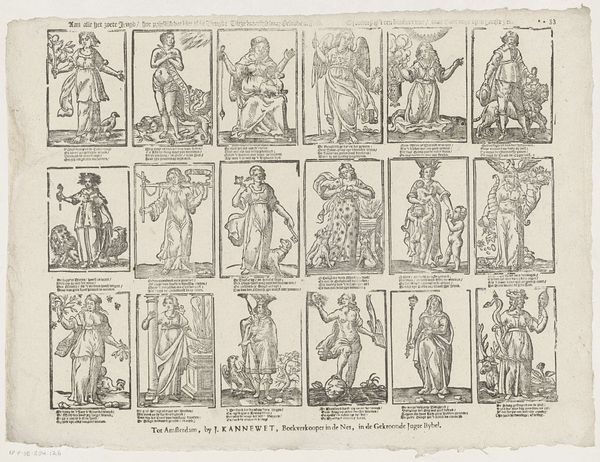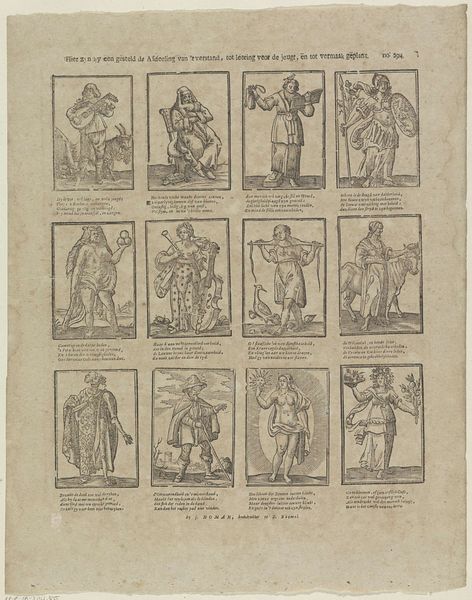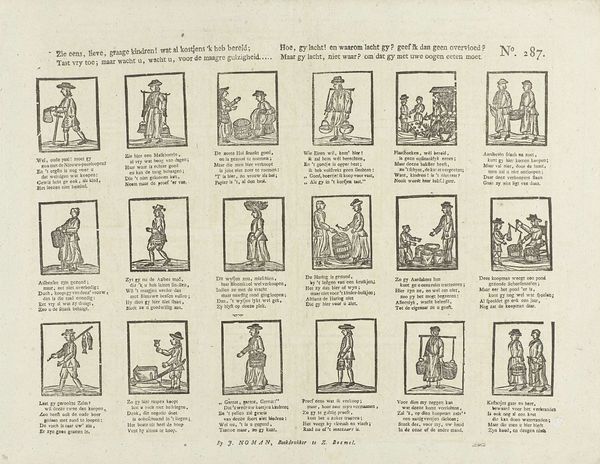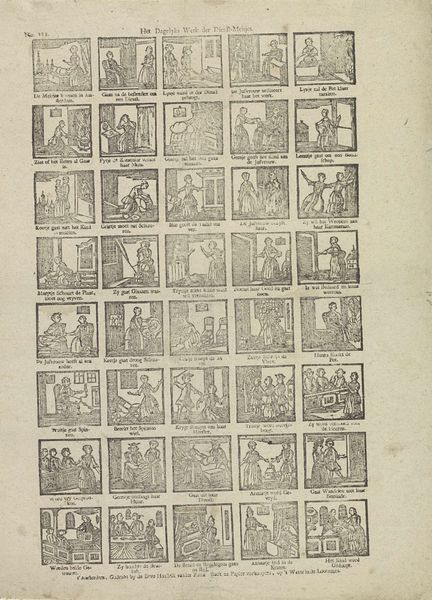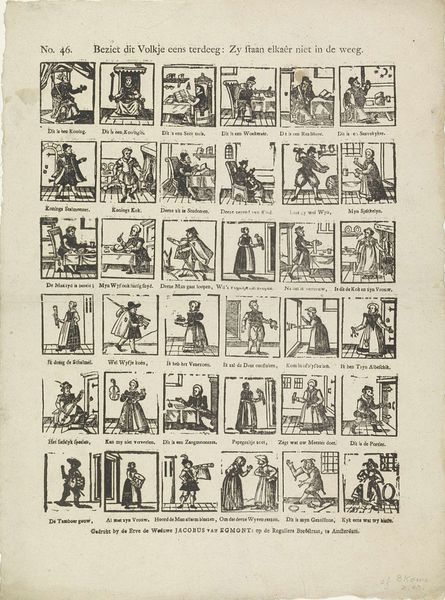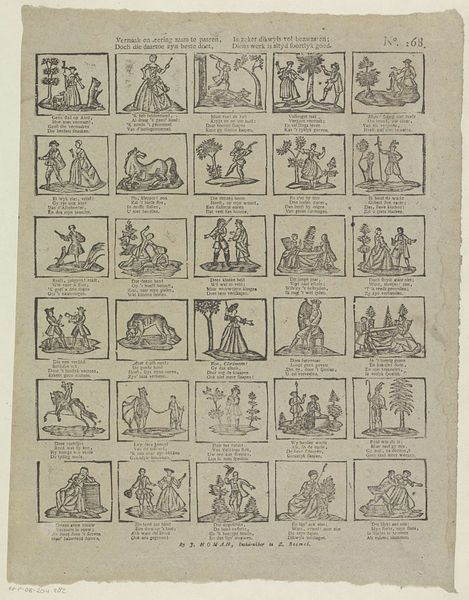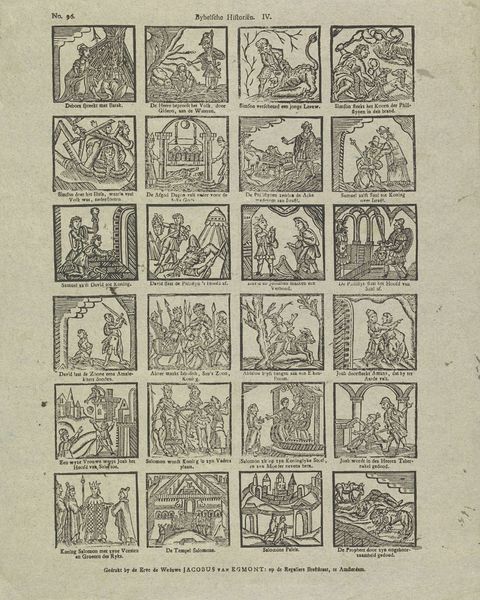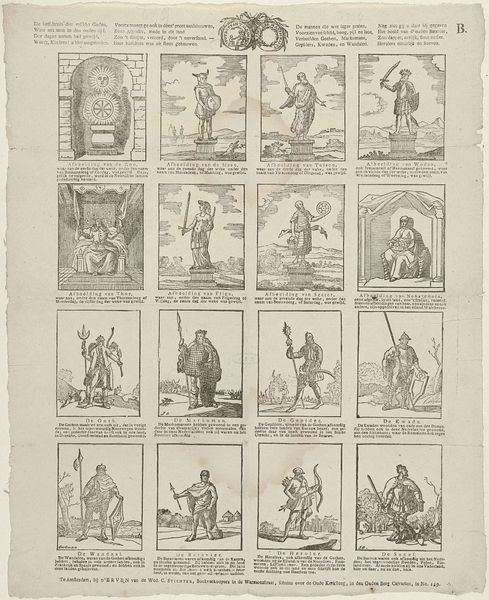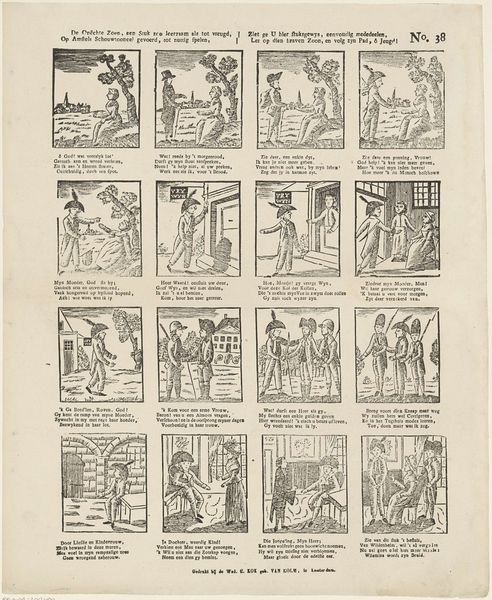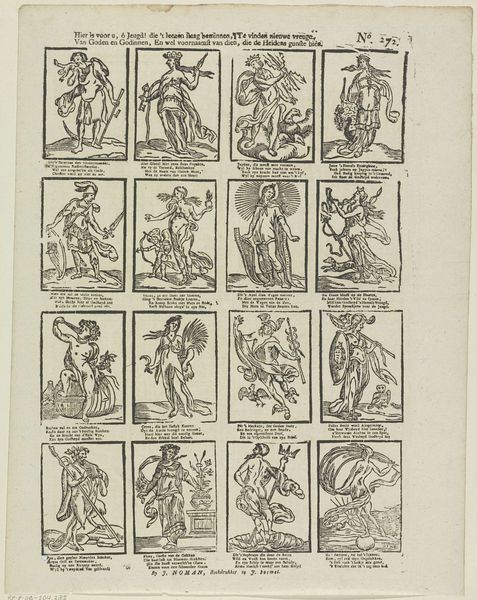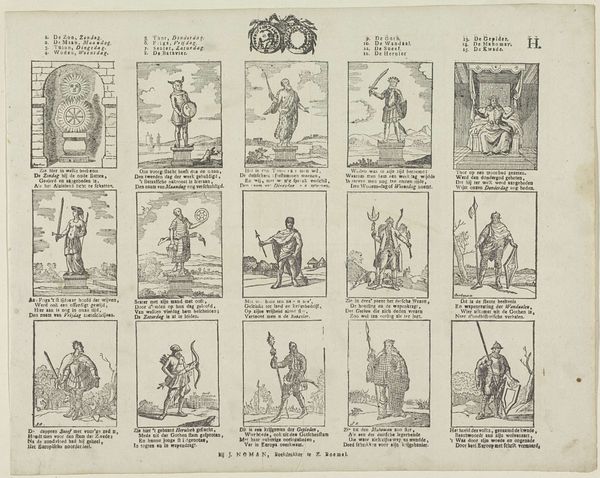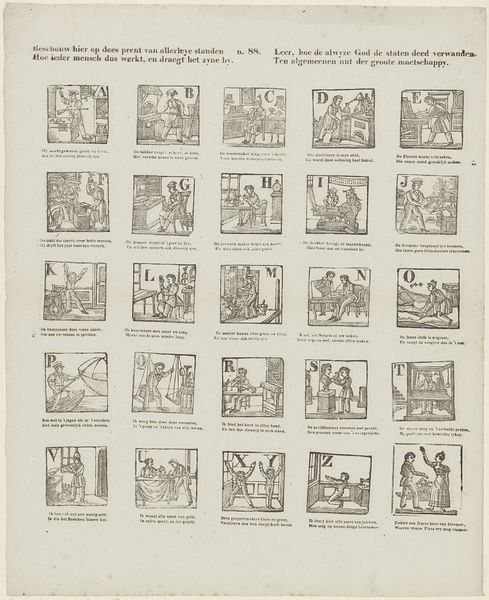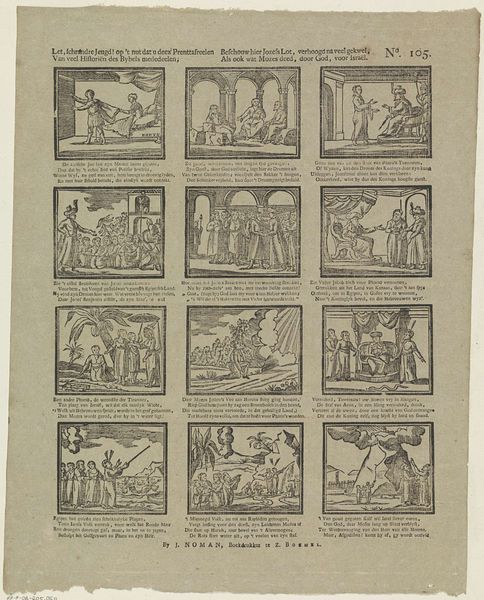
Dit prent tooneeltje, o jeugd ! vertoont u veele zaaken / Die, zo ge oplettend zyt u leeren en vermaaken
0:00
0:00
graphic-art, print, engraving
#
graphic-art
#
comic strip sketch
#
narrative-art
#
dutch-golden-age
# print
#
pen sketch
#
old engraving style
#
personal sketchbook
#
sketchwork
#
pen-ink sketch
#
pen work
#
sketchbook drawing
#
genre-painting
#
storyboard and sketchbook work
#
sketchbook art
#
engraving
Dimensions: height 318 mm, width 412 mm
Copyright: Rijks Museum: Open Domain
Editor: Here we have a print entitled "Dit prent tooneeltje, o jeugd! vertoont u veele zaaken / Die, zo ge oplettend zyt u leeren en vermaaken" which, roughly translated, speaks about how this "scene" teaches and delights if one is observant. It’s credited to Johan Noman and done in engraving. What do you see when you look at this overall composition? Curator: I see a fascinating intersection of print culture and didactic messaging, likely aimed at a young audience in the Dutch Golden Age. The individual scenes, each with a caption, seem to be miniature morality plays. Consider how this functions as both entertainment and social control. Editor: Social control? Could you explain that further? Curator: Well, prints like these were widely distributed and accessed across social classes, meaning the values they depict were actively shaped by the art form. Look at how everyday life is portrayed, how behaviours are either lauded or criticised, then consider whose interests were being served. Are these images reinforcing existing power structures? Editor: That makes sense. So it’s not just innocent storytelling, it’s reinforcing certain social norms. Is there anything else about its historical impact? Curator: Absolutely. Consider its circulation and reception. Who bought this? Where would it have been displayed? And what did the act of viewing mean for shaping social consciousness at that time? Thinking about those types of question positions the art as an integral component of our understanding the politics of everyday life during that historical time period. Editor: That's a great way to frame it! It goes way beyond face value. Now I have much to think about and look at.
Comments
No comments
Be the first to comment and join the conversation on the ultimate creative platform.
